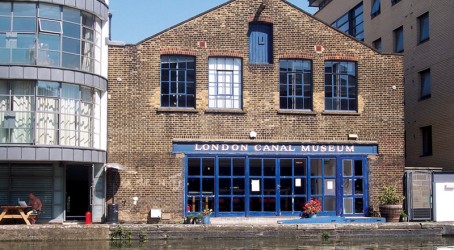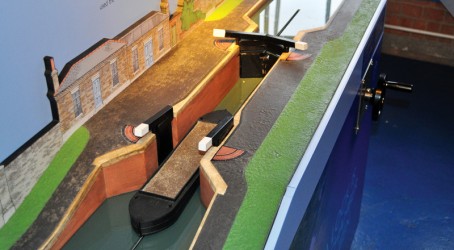Museums
Engineering underpinned the development of Britain’s extensive inland waterways network. From the civil construction effort needed to build the canals, through to the mechanical skills required for the many various types of locks that provide the navigable access, it was the sterling work of engineers that made the canals what they are today.
Those efforts are recognised in a small museum located, perhaps surprisingly, in the heart of London. The capital might seem a peculiar choice to house such an establishment, but the inland waterways were an important route for commercial traffic in the 19th and 20th century, particularly during the inter-war years, being used to carry iron and steel from the Midlands to Docklands. Indeed, Regent’s Canal runs right through the city, providing a link from the Paddington arm of the Grand Union Canal, just north-west of Paddington Basin in the west, to the Limehouse Basin and the river Thames in east London.
Narrowboats can still be seen meandering down this stretch of urban waterway, offering a wonderful juxtaposition to the furious pace of modern life.

It’s on the banks of the Regent’s Canal that the London Canal Museum can be found. The building itself is one of the last surviving commercial ice warehouses – in the days before refrigeration, ice blocks from Norway were stored in its cavernous wells for distribution across the capital. It is still possible for visitors to descend ladders into the spooky wells during specially organised events.
The two-floor building isn’t very large, though, and therein lies the problem with the London Canal Museum. There isn’t really much room to display any meaningful pieces of canal artefacts, such as any full-size narrowboats or lock gates. There is a section of one “butty”, an unpowered boat made by Harland and Woolf in 1935 that was used to carry timber, steel and tinned fruit from London Docklands to the Midlands. And it is possible to access the adjacent Battlebridge Basin, where private boats are moored. But that doesn’t offer the visitor any chance to experience life onboard – a major failing for a museum of this type.

So visitors have to make do with learning the history of London’s canals from display boards and from pieces of associated memorabilia such as “roses and castles” canal art, traditional canal clothing and cargo handling equipment. There is also a section explaining how horses lived and worked in the 19th century, and a large map showing how the canals developed. Some effort is made to make the place interactive with a section offering lessons in knot making and with a small hand-operated model of a lock, but it all seemed rather tired and old-fashioned. Indeed, the museum was virtually empty when PE visited on a pleasant Tuesday afternoon, and it took less than an hour to get round.
What is worthy of note, though, is that the museum offers a series of scheduled events and activities that does allow visitors to sample life afloat. Boat trips through the Islington tunnel take place on 12 and 19 June, 17 and 31 July, and 14 and 21 August. These need to be booked in advance through the museum’s website. Other activities also take place within the museum on special days, such as painting workshops, and talks on the history of the canals.
In truth, it’s hard to recommend that anyone go out of their way to visit this museum. If canals are your thing, it is probably better to visit the Canal Museum at Stoke Bruerne in Northamptonshire which offers a fine collection of models of working boats, including barges, narrowboats, tugs and butties, and therefore offers a fuller day out.